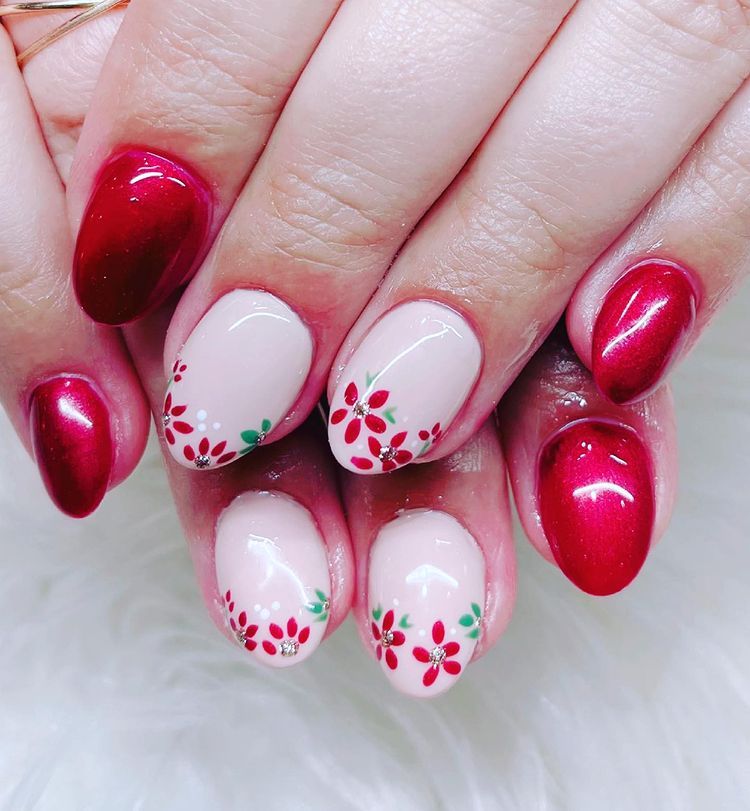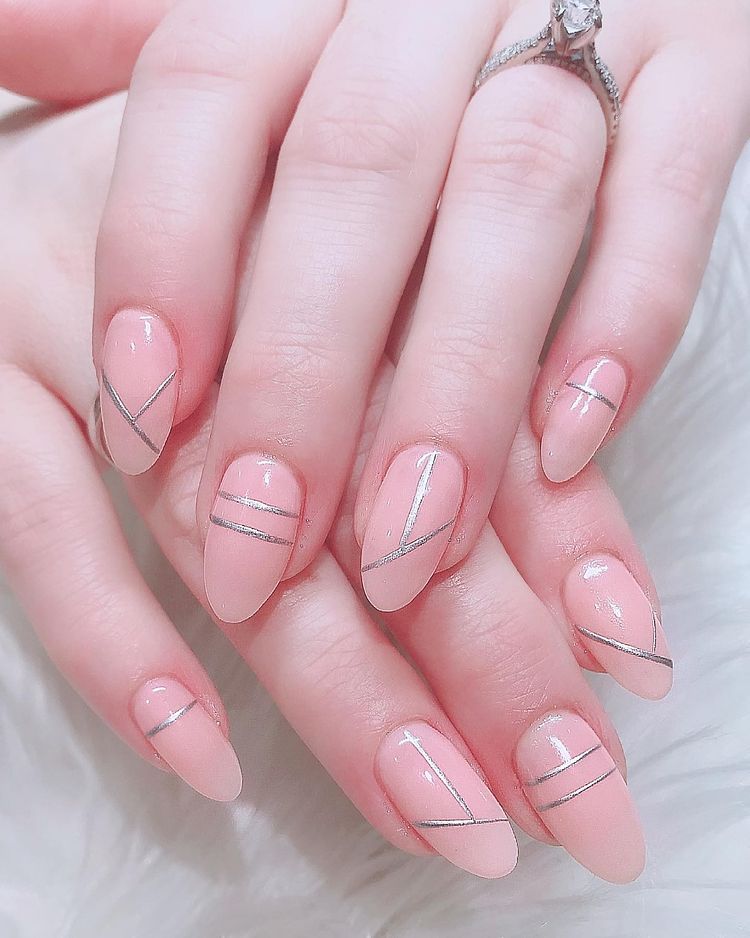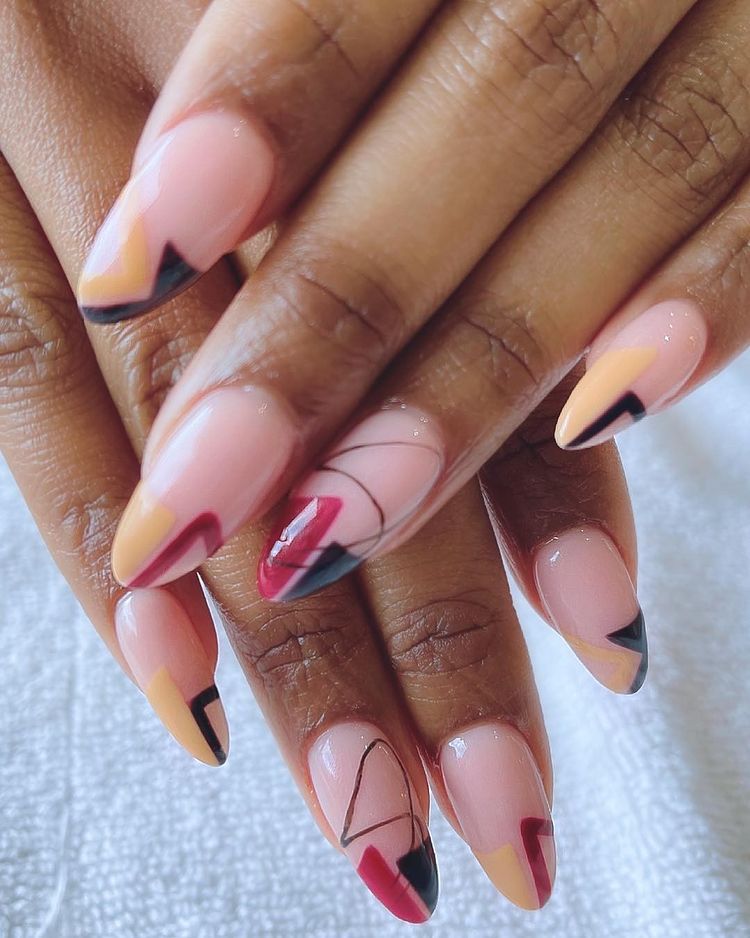Why Do My Fingernails Hurt? If you’re experiencing fingernail discomfort, WHY.EDU.VN is here to help you understand the possible causes, ranging from common injuries to underlying conditions. By exploring potential problems such as trauma, infections, or even nail disorders and offering appropriate remedies, we empower you to make informed decisions about your nail health and general well-being, providing solutions to ease your pain and discomfort. Let’s explore the causes of nail sensitivity, nail bed pain, and nail plate issues.
Table of Contents
1. Ingrown Fingernails
2. Torn or Cracked Nails
3. Torn Hangnails
4. Nail Fungus
5. Hematoma
6. Paronychia
7. Subungual Tumors
8. Other Potential Causes of Fingernail Pain
9. Prevention Tips for Healthy Fingernails
10. When to Seek Professional Medical Advice
FAQ Section
1. Ingrown Fingernails
An ingrown fingernail occurs when the edge of your nail grows into the surrounding skin. This can be incredibly painful, especially when pressure is applied. Ingrown nails are most typically found on the toes; however, they can appear on fingernails and cause excruciating agony when pressing on the nail. It is a prevalent condition that affects 2.5 to 5% of people.
Symptoms of an ingrown fingernail may include:
- Pain
- Tenderness
- Swelling
- Redness
- Bleeding
1.1. Home Remedies for Ingrown Fingernails
For mild cases, home treatment can often provide relief:
- Warm Water Soaks: Immerse the affected finger in warm water for 10-20 minutes, twice daily.
- Topical Antibiotic Cream: Apply an over-the-counter antibiotic cream to prevent infection.
- Bandaging: Protect the area with a sterile bandage.
1.2. When to Seek Medical Treatment for Ingrown Fingernails
If your condition worsens or doesn’t improve with home care, seek professional help. Signs that you need medical attention include:
- Persistent or worsening pain
- Fever
- Increased swelling
- Redness spreading from the nail
- Warmth around the affected area
A healthcare provider may recommend:
- Prescription antibiotics or steroid creams
- Taping the nail to encourage proper growth
- Placing a small cotton ball under the nail to lift it
- Partial or complete nail removal in severe cases
2. Torn or Cracked Nails
A torn or cracked nail can expose the sensitive nail bed, leading to significant pain, especially when pressed. The nail bed is highly sensitive due to the numerous nerve endings present.
2.1. Home Care for Torn or Cracked Nails
Here’s how to care for a torn or cracked nail at home:
- Trim the Nail: Use clean nail clippers or scissors to carefully trim any loose or hanging pieces.
- Wash and Soak: Gently wash the nail with mild soap and cool water.
- Apply Antibiotic Ointment: To prevent infection, apply a thin layer of antibiotic ointment.
- Bandage the Wound: Cover the nail with a bandage to protect it while it heals.
2.2. When to Consult a Doctor for Nail Injuries
If you experience persistent pain, signs of infection, or if the area doesn’t begin to heal within a week, consult a doctor.
3. Torn Hangnails
Hangnails are small pieces of skin that separate from the skin around your fingernails. They are more common in dry weather and can become painful and prone to infection if torn.
3.1. Home Treatment for Torn Hangnails
Follow these steps to treat a torn hangnail:
- Clean Thoroughly: Wash your hands with soap and warm water to remove any dirt or bacteria.
- Apply Antibiotic Cream: Apply a small amount of antibiotic cream to the affected area.
- Cover with a Bandage: Protect the hangnail with a bandage to prevent further irritation and infection.
3.2. When to Seek Medical Advice for Hangnails
If the pain persists or the area shows signs of infection (redness, swelling, pus), seek medical attention. A healthcare provider may prescribe a topical or oral antibiotic.
4. Nail Fungus (Onychomycosis)
Nail fungus, or onychomycosis, can change the appearance of your fingernails and cause pain when pressure is applied. The fungus can be contracted in damp conditions.
Symptoms of nail fungus may include:
- Thickening of the nail
- Discoloration (yellow, white, or brown)
- Brittleness or crumbling
- Pain or discomfort
4.1. Home Remedies for Nail Fungus
You can try over-the-counter or at-home remedies to manage nail fungus:
- Tea Tree Oil: Apply tea tree oil, known for its antifungal properties, to the affected nail.
- Oregano Oil: Similar to tea tree oil, oregano oil has antifungal benefits.
- Vinegar Soaks: Soak your finger in a mixture of vinegar and water.
- Vapor Rub: Some people find that applying vapor rub can help alleviate symptoms.
4.2. When to Seek Medical Intervention for Nail Fungus
If home remedies are ineffective, consult a doctor. They may prescribe stronger topical or oral antifungals, or in severe cases, recommend nail removal.
5. Hematoma (Subungual Hematoma)
A hematoma, or subungual hematoma, occurs when blood collects beneath your nail, typically after an injury like smashing your finger or dropping something heavy on it. This can cause significant pain due to the pressure of the blood beneath the nail.
Symptoms of a subungual hematoma may include:
- Intense pain
- Discoloration of the nail (purple, brown, or black)
- Pressure under the nail
5.1. At-Home Care for a Hematoma
- Rest: Avoid using the injured finger.
- Cold Compress: Apply a cold compress to reduce swelling.
- Elevation: Keep your hand elevated to minimize blood pooling.
- Gentle Pressure: Apply gentle pressure to the nail to stop further bleeding.
- Pain Medication: Take over-the-counter pain relievers as needed.
5.2. When to Seek Professional Help for a Hematoma
If the hematoma worsens, becomes extremely painful, or if you suspect damage to the nail bed, seek medical attention. A doctor may drain the hematoma to relieve pressure.
6. Paronychia
Paronychia is an infection of the skin around your fingernail or toenail, causing swelling, redness, and pain. It can be acute (sudden onset) or chronic (long-lasting).
Causes of paronychia:
- Bacterial infection
- Fungal infection
- Dermatitis
6.1. Home Management of Paronychia
- Warm Water Soaks: Soak the affected finger in warm water for 20 minutes several times a day.
- Keep Hands Dry: Prevent chronic paronychia by keeping your hands warm and dry.
- Keep Nails Clean: Ensure your nails are clean to prevent further infection.
6.2. When Medical Intervention is Needed for Paronychia
If home treatments are ineffective, a doctor may prescribe antibiotics, steroids, antifungals, or recommend drainage or nail removal in severe cases.
7. Subungual Tumors
Subungual tumors are growths that form beneath the fingernail and can cause significant pain. These tumors can be benign or malignant and require medical diagnosis and treatment.
Symptoms of subungual tumors may include:
- Severe pain
- Deformity of the nail
- Discoloration
7.1. When to Seek Medical Diagnosis for a Subungual Tumor
If you suspect a subungual tumor, it is crucial to see a doctor immediately. Diagnosis may involve in-office tests or diagnostic imaging. Treatment typically involves removing the tumor, which may require partial or complete nail extraction.
8. Other Potential Causes of Fingernail Pain
Besides the conditions mentioned above, several other factors can contribute to fingernail pain:
- Nail Psoriasis: This condition can cause pitting, thickening, and discoloration of the nails.
- Lichen Planus: This inflammatory condition can affect the nails, causing ridges, thinning, and splitting.
- Systemic Diseases: Certain systemic diseases, such as lupus and rheumatoid arthritis, can affect the nails.
- Medications: Some medications can cause nail changes and pain.
- Repetitive Stress: Activities that put repetitive stress on the nails, such as typing or playing certain musical instruments, can lead to pain.
- Nail Biting: Chronic nail-biting can damage the nail bed and surrounding tissue, causing pain and increasing the risk of infection.
- Harsh Chemicals: Exposure to harsh chemicals, such as those found in cleaning products or nail polish removers, can irritate the nails and surrounding skin.
Here is a summary of potential causes in a table:
| Cause | Symptoms | Treatment |
|---|---|---|
| Nail Psoriasis | Pitting, thickening, discoloration | Topical corticosteroids, phototherapy |
| Lichen Planus | Ridges, thinning, splitting | Topical or oral corticosteroids |
| Systemic Diseases | Nail changes depending on the disease | Treatment of the underlying disease |
| Medications | Nail changes as a side effect | Consult with doctor about alternative medications |
| Repetitive Stress | Pain, inflammation | Rest, modify activities, use supportive devices |
| Nail Biting | Damaged nail bed, infection | Behavioral therapy, bitter-tasting nail polish |
| Exposure to Harsh Chemicals | Irritation, dryness, nail damage | Avoid exposure, use protective gloves, moisturize |




9. Prevention Tips for Healthy Fingernails
Preventing fingernail problems involves maintaining good nail hygiene and adopting healthy habits:
- Keep Nails Clean and Dry: Regularly wash your hands and dry them thoroughly, especially after exposure to water.
- Trim Nails Properly: Trim your nails straight across and avoid cutting them too short.
- Avoid Nail Biting: Refrain from biting or picking at your nails and the surrounding skin.
- Moisturize Regularly: Apply a moisturizer to your hands and nails to prevent dryness.
- Wear Gloves: Protect your hands and nails by wearing gloves when doing housework or working with chemicals.
- Use Nail Polish Sparingly: Limit your use of nail polish and artificial nails, as they can weaken the nails.
- Avoid Harsh Chemicals: Limit exposure to harsh chemicals found in cleaning products and nail polish removers.
- Eat a Balanced Diet: Ensure you’re getting enough vitamins and minerals, which are essential for healthy nail growth.
- Stay Hydrated: Drink plenty of water to keep your nails and skin hydrated.
10. When to Seek Professional Medical Advice
While many fingernail problems can be managed at home, it’s important to seek medical advice if you experience any of the following:
- Severe pain that doesn’t improve with home treatment
- Signs of infection (redness, swelling, pus)
- Nail discoloration or thickening that doesn’t resolve
- Nail deformities or changes in nail texture
- Bleeding around the nail
- Nail injuries that don’t heal
- Underlying medical conditions that may be affecting your nails
A healthcare professional can provide an accurate diagnosis and recommend the most appropriate treatment plan.
FAQ Section
Q1: What are the most common causes of fingernail pain?
A1: Common causes include trauma, infections (such as paronychia or nail fungus), ingrown nails, and underlying conditions like nail psoriasis.
Q2: How can I tell if my fingernail pain is due to an infection?
A2: Signs of infection include redness, swelling, pus, warmth, and throbbing pain around the nail.
Q3: Can a vitamin deficiency cause fingernail pain?
A3: While vitamin deficiencies are more likely to cause nail changes like brittleness or ridges, severe deficiencies can potentially contribute to nail discomfort.
Q4: What is the best way to treat a bruised fingernail?
A4: Treat a bruised fingernail with rest, ice, elevation, and over-the-counter pain relievers. If the pain is severe or there’s a large hematoma, see a doctor.
Q5: How can I prevent nail fungus?
A5: Prevent nail fungus by keeping your nails clean and dry, wearing breathable shoes, avoiding walking barefoot in public places, and not sharing nail clippers or files.
Q6: Is it safe to cut an ingrown fingernail myself?
A6: It’s best to avoid cutting an ingrown fingernail yourself, as you risk making the condition worse or causing an infection. See a healthcare provider for proper treatment.
Q7: What are the potential complications of untreated nail problems?
A7: Untreated nail problems can lead to chronic pain, infection spreading to surrounding tissues, nail deformities, and in severe cases, the need for nail removal.
Q8: Can nail polish cause fingernail pain?
A8: While nail polish itself doesn’t usually cause pain, frequent use of harsh chemicals like nail polish remover can dry out and weaken the nails, making them more prone to damage and discomfort.
Q9: How long does it take for a fingernail to grow back after an injury?
A9: Fingernails grow slowly, typically taking about 3-6 months to fully regrow.
Q10: When should I be concerned about changes in my fingernails?
A10: Be concerned about changes in your fingernails if you notice sudden changes in color, thickness, shape, or texture, especially if accompanied by pain or other symptoms. These changes could indicate an underlying medical condition that requires evaluation.
Experiencing persistent or unexplained fingernail pain can be concerning, and it’s essential to understand the potential causes and know when to seek professional help. At WHY.EDU.VN, we’re dedicated to providing you with accurate and reliable information to help you make informed decisions about your health. If you have further questions or concerns about your fingernail pain, don’t hesitate to reach out to us. You can visit us at 101 Curiosity Lane, Answer Town, CA 90210, United States, contact us via WhatsApp at +1 (213) 555-0101, or visit our website at why.edu.vn to ask a question and connect with experts who can provide personalized guidance. Your well-being is our priority.
